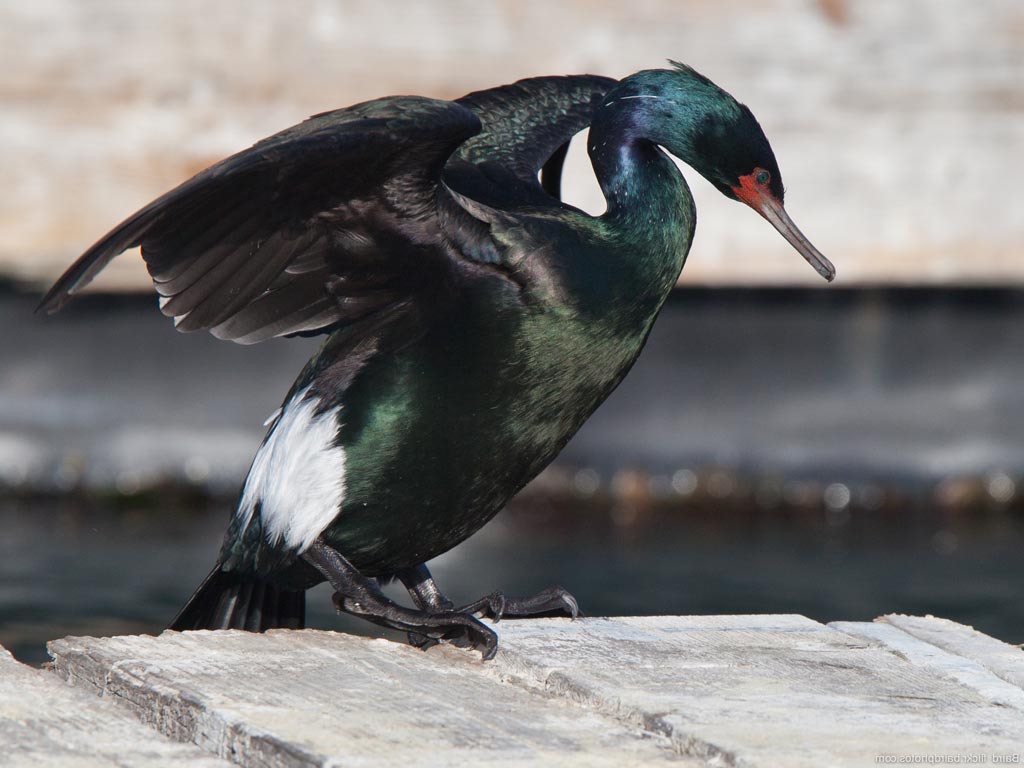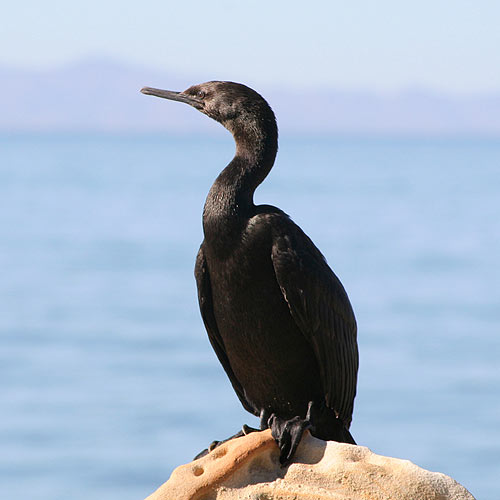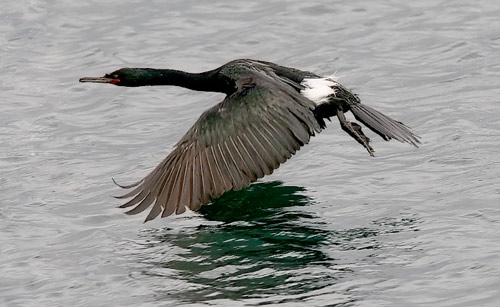
Phalacrocorax pelagicus
TAXONOMY
Phalacrocorax pelagicus Pallas, 1811, eastern Kamachatka and the
Aleutian Islands. Two subspecies.
OTHER COMMON NAMES
English: Baird’s cormorant, pelagic shag; French: Cormoran
pйlagique; German: Meerscharbe; Spanish: Cormorбn Pelбgico.
PHYSICAL CHARACTERISTICS
Body length of 22 in (56 cm), with a dark bill, red cheek
pouch and throat patch, glossy blackish plumage, and black
legs and feet.
DISTRIBUTION
Occurs along the Pacific coast of North America, from the top
of Baja California through to northwestern Alaska, across the
Aleutians to eastern Siberia, and south to northern Honshu Island,
Japan, plus most Beringian waters in between.
HABITAT
Nests on cliff-ledges and in trees and feeds in coastal waters.
BEHAVIOR
A social species that breeds in colonies and aggregates in
flocks.
FEEDING ECOLOGY AND DIET
Feeds on small fish, squid, and crustaceans.
REPRODUCTIVE BIOLOGY
Lays three to four eggs in a crude nest, with both sexes sharing
the incubation (c. 31 days) and rearing of the chick.
CONSERVATION STATUS
Not threatened. Abundant over much of its range.
SIGNIFICANCE TO HUMANS
None known.
Other popular Animals
Photo Gallery of - Pelagic cormorant




 Animalia Life
Animalia Life